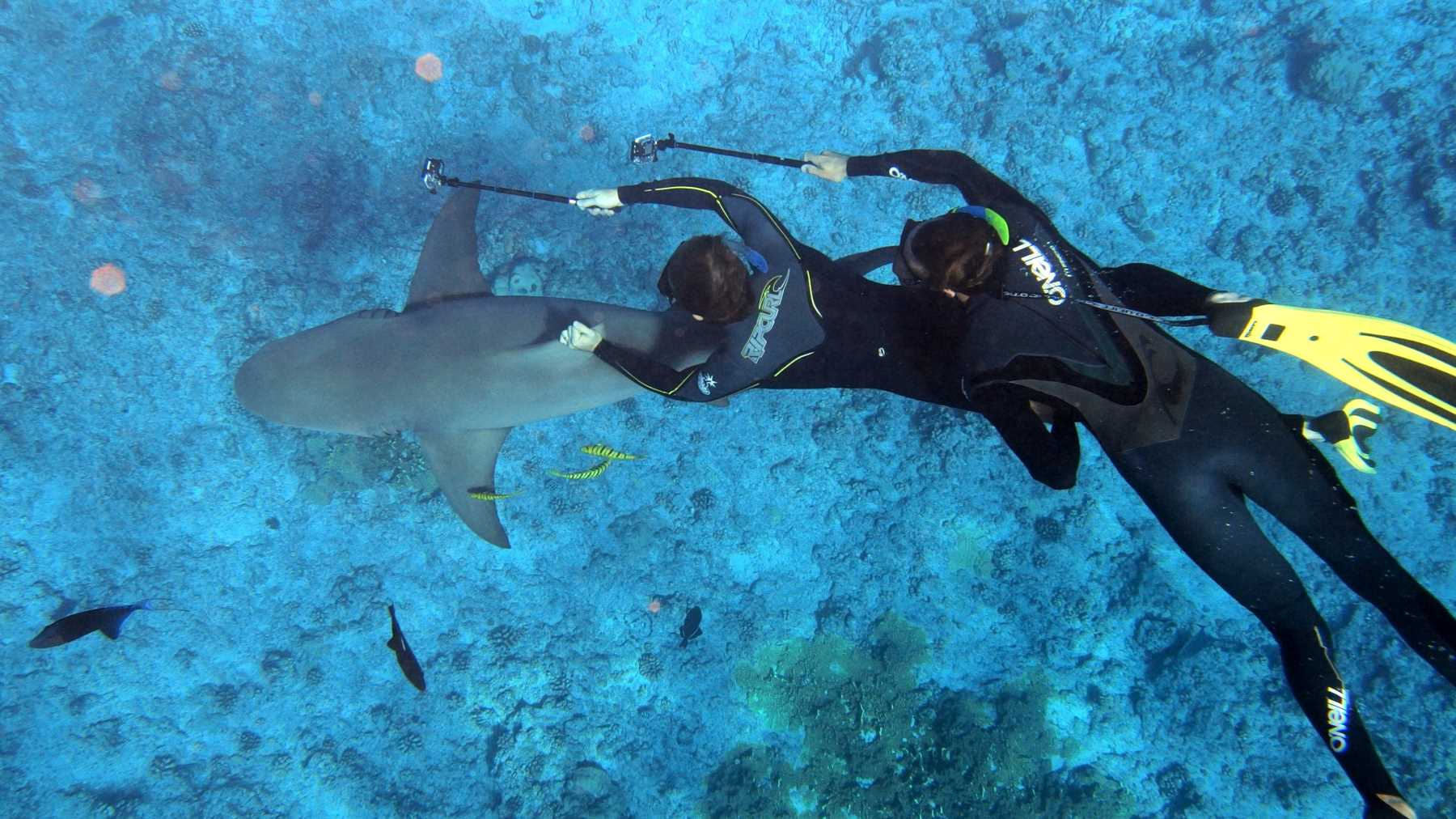
7 Interesting research methods that scientists use to study sharks
For many years, researchers have been applying new and improved techniques to study sharks. But how exactly do they manage to research one of the ocean’s most notorious apex predators?
How Shark Research Helps Us Understand These Ocean Predators
Shark research plays a vital role in expanding our understanding of these incredible ocean predators. Scientists around the world study everything from species diversity to movement patterns and behavioral traits. Each research effort helps reveal how sharks live, adapt, and interact with their environment. Below are some of the main methods used by universities and research institutions to study sharks.
Shark Tagging
In shark tagging, researchers catch specific species and attach a tracking tag to the dorsal fin before releasing the shark back into the ocean. These tags send data via satellite or radio signals, allowing scientists to follow the shark’s movements in near real-time. Tagging reveals important details about migratory routes, preferred habitats, and population size. It is one of the most widely used tools for studying shark behavior and distribution. A well-known example is the Tagging of Pelagic Predators (TOPP) project, which monitors wide-ranging oceanic sharks.
Underwater Videography
Underwater video footage gives researchers a close look at sharks in their natural environment. Divers with SCUBA training often spend long hours recording shark activity, while remote-operated cameras collect footage without direct human involvement. These videos help scientists study shark body structure, hunting habits, social behavior, and how sharks react to changes in their surroundings.
Aerial Surveys
Aerial surveys offer a wider view of shark activity, especially for species found near coastal or surface waters. Researchers use drones, helicopters, or light aircraft to locate and document shark sightings from above. This technique is especially useful for estimating numbers, tracking seasonal gatherings, and observing behavior in real time. Both aerial and underwater video surveys are considered non-invasive methods that allow for effective data collection without disturbing the animals.
From the deep sea to the sky above, these research methods show how scientists work to better understand and protect sharks. With each discovery, we move closer to preserving these apex predators and the ocean ecosystems they help to maintain.
You don’t need to be a scientist to help sharks!
Join the Shark Research Unit and gain hands-on skills that directly contribute to shark science, research, and conservation.
Tracking Shark Migration from Underwater
Shark researchers have recently adopted a new technique for tracking migration using underwater receiver stations. They place tracking devices on seamounts (underwater mountains) to monitor the movements of tagged sharks as they travel through specific regions. Scientists currently use this method to study the migration routes of endangered species like silky sharks and hammerhead sharks between Costa Rica and the Galápagos Islands. This innovative approach provides critical insights into long-distance movements and helps identify important habitats in the open ocean.
Literature Reviews: The Foundation of Shark Science
Although it may not offer the same excitement as fieldwork, reviewing existing literature plays a vital role in shark research. Researchers begin each project by gathering and analyzing all available academic information about a specific shark species or research question. They draw from journal articles, theses, and scientific reports to build a solid foundation for their investigations.
Students pursuing shark biology often write theses that include in-depth literature reviews. This step ensures they avoid repeating previous work, refine their hypotheses, and give proper credit to earlier studies. A thorough review also helps position their research within the broader context of shark science.
Environmental DNA (eDNA) Surveys
Environmental DNA, or eDNA, offers one of the most efficient and non-invasive methods for detecting sharks in a given area. Scientists collect and filter water samples to locate trace DNA fragments left behind by sharks. This method continues to gain popularity for its cost-effectiveness and minimal impact on marine life.
For example, the Save Our Seas Foundation uses eDNA in its global sawfish survey to locate and monitor critically endangered sawfish across their historic range.
Forensic Shark Research
Forensic techniques play a key role in exposing illegal fishing and the shark fin trade. Researchers analyze shark carcasses and dried fins from markets, especially in parts of Asia, to identify the targeted species.
Institutions like the Guy Harvey Research Institute trace the origins of these fins to understand which shark populations face the greatest pressure. This research helps shape conservation policies and raises public awareness about vulnerable species.
These methods represent just a few of the many ways researchers study sharks around the world. From the ocean floor to global DNA surveys and forensic investigations, shark science continues to drive discovery and conservation.
If you’re passionate about sharks and want to gain real-world research experience, consider joining our Shark Development Program. You’ll learn valuable skills, contribute to meaningful research, and take your first steps into the world of shark conservation.



 Let us know where we can send fundraising opportunities. In the meantime download our eBook featuring 18 scholarship awards for study-abroad adventures
Let us know where we can send fundraising opportunities. In the meantime download our eBook featuring 18 scholarship awards for study-abroad adventures  Let us know where we can send fundraising opportunities. In the meantime download 40 great fundraising ideas eBook right here
Let us know where we can send fundraising opportunities. In the meantime download 40 great fundraising ideas eBook right here  Let us know where we can send you more fundraising insights to help jump start your career as a marine scientist
Let us know where we can send you more fundraising insights to help jump start your career as a marine scientist